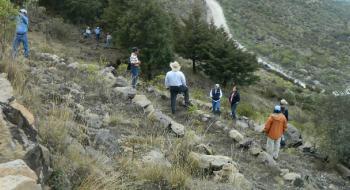Farmers in poor rural areas of Guatemala are learning how agroforestry incorporating the culturally important breadnut tree can boost their nutrition and income as well as restoring degraded land through deforestation*.
In a pilot project, the Food and Agriculture Organization of the United Nations assisted 38 smallholder families in Petén, the northernmost department of Guatemala, to become “restoration farmers.” Their plots will serve as demonstration sites for efforts to scale up the initiative to the regional level.
Cultural values form part of the sustainable land management in Petén. The breadnut tree (Brosimum alicastrum) is considered a holy tree and a source of life in the Maya culture. While the fruits and seeds are consumed by local people, other parts such as branches, leaves, or shoots feed a large variety of animals both domestic and wild.
The selected families, drawn mainly from the Maya Q'qchi' people, live in San Luis and Poptún, municipalities in a region where poverty rates are high and soils have undergone drastic changes as a result of deforestation.
Other crops encouraged under the program include food crops banana and yucca, moringa trees whose leaves and seeds are also edible, and gliricidia trees for firewood and soil fertility enhancement. The crops are selected to provide nutrition security and supplemental incomes, especially in the first years before the trees provide timber or non-timber forest products.
The families were trained on how to integrate the new crops into their land. Then they received seeds, buds and stakes to sow and distribute within their fields. Further talks and training have helped them to keep the trees in good condition.
Wildlife has returned to the plots as the agroforestry system imitates the structure of a forest. Pollinators have also recovered due to the higher diversity of insects. Cassava plants, for instance, support bees, bugs and bumblebees.
The multiplying effect of this initiative has been achieved by incorporating these families into incentive programs of the National Forest Service. These programs allows farmers to follow these practices for six years and achieve the sustainability of these systems over time.

